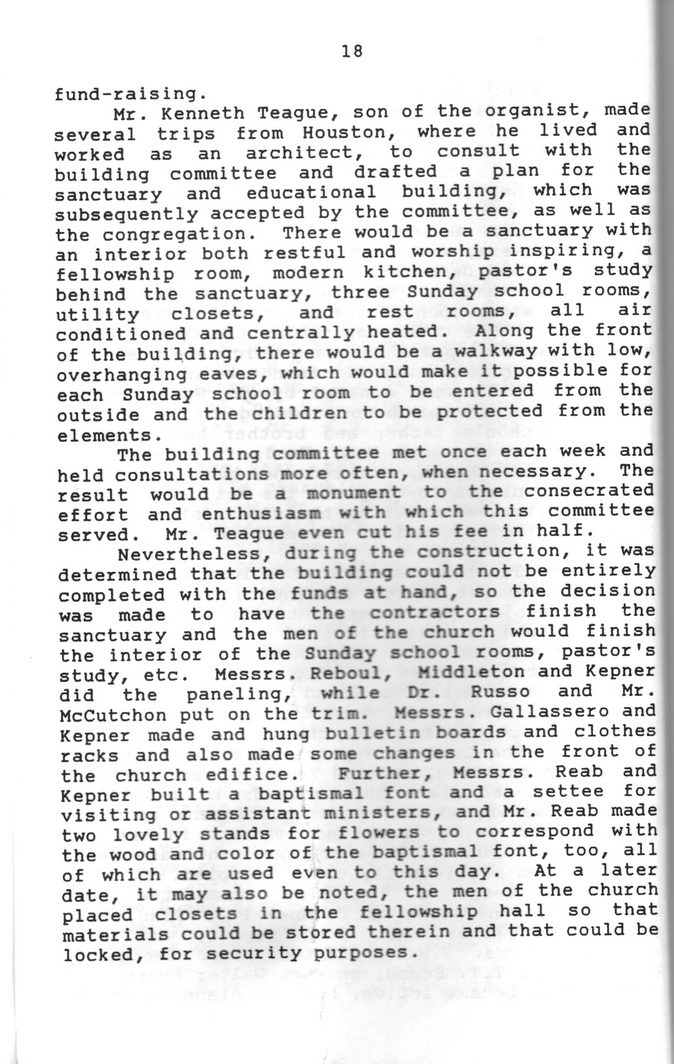This text was obtained via automated optical character recognition.
It has not been edited and may therefore contain several errors.
18 fund-rais ing. Mr. Kenneth Teague, son of the organist, made several trips from Houston, where he lived and worked as an architect, to consult with the building committee and drafted a plan for the sanctuary and educational building, which was subsequently accepted by the committee, as well as the congregation. There would be a sanctuary with an interior both restful and worship inspiring, a fellowship room, modern kitchen, pastor's study behind the sanctuary, three Sunday school rooms, utility closets, and rest rooms, all air conditioned and centrally heated. Along the front of the building, there would be a walkway with low, overhanging eaves, which would make it possible for each Sunday school room to be entered from the outside and the children to be protected from the elements. The building committee met once each week and held consultations more often, when necessary. The result would be a monument to the consecrated effort and enthusiasm with which this committee served. Mr. Teague even cut his fee in half. Nevertheless, during the construction, it was determined that the building could not be entirely completed with the funds at hand, so the decision was made to have the contractors finish the sanctuary and the men of the church would finish the interior of the Sunday school rooms, pastor's study, etc. Messrs. Reboul, Middleton and Kepner did the paneling, while Dr. Russo and Mr. McCutchon put on the trim. Messrs. Gallassero and Kepner made and hung bulletin boards and clothes racks and also made some changes in the front of the church edifice. Further, Messrs. Reab and Kepner built a baptismal font and a settee for visiting or assistant ministers, and Mr. Reab made two lovely stands for flowers to correspond with the wood and color of the baptismal font, too, all of which are used even to this day. At a later date, it may also be noted, the men of the church placed closets in the fellowship hall so that materials could be stored therein and that could be locked, for security purposes.

First Presbyterian Church History-of-the-First-Presbyterian-Church-21